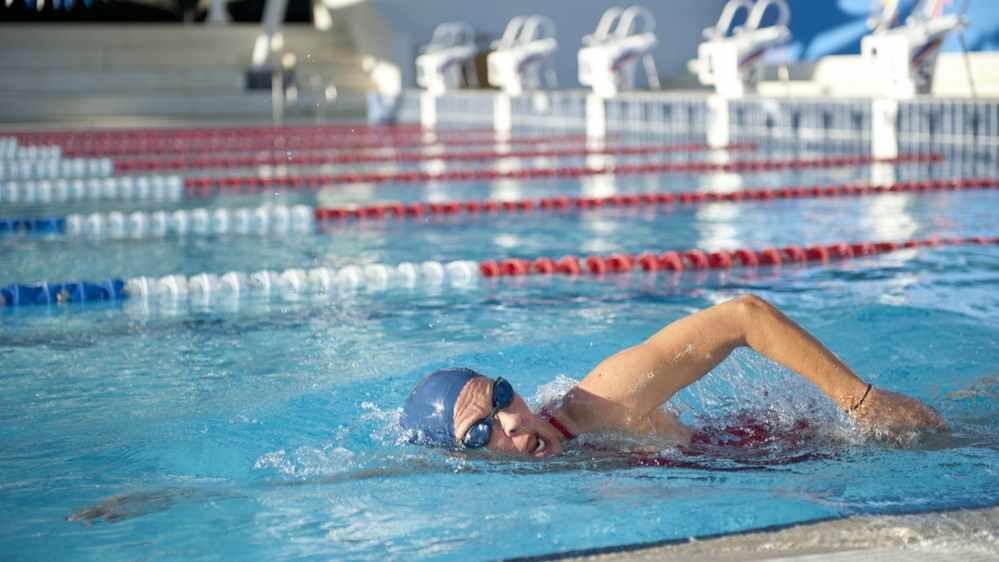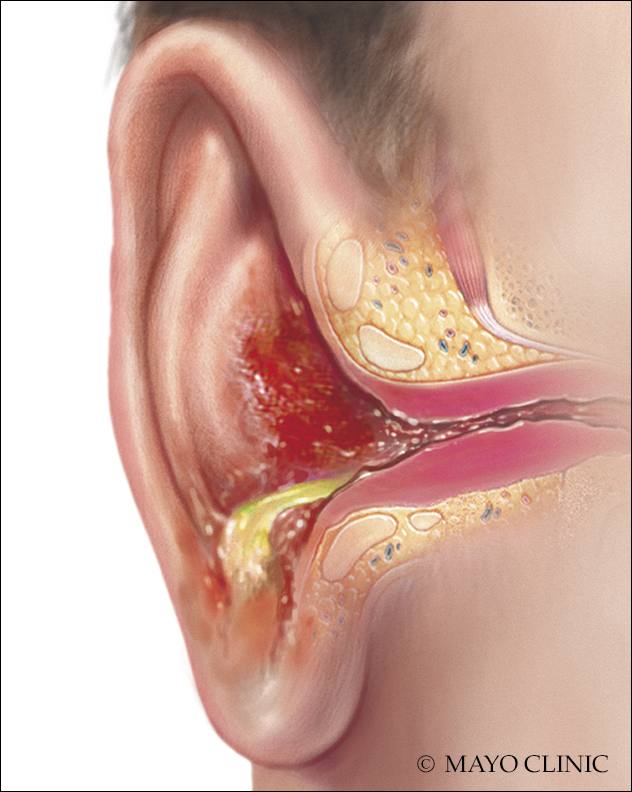-
Home Remedies: Swimmer’s ear

Swimmer's ear, also known as otitis externa, is an infection in the outer ear canal, which runs from your eardrum to the outside of your head. It's often brought on by water that remains in your ear after swimming, creating a moist environment that aids bacterial growth.
The most common cause of this infection is bacteria invading the skin inside your ear canal. Usually you can treat swimmer's ear with eardrops. Prompt treatment can help prevent complications and more-serious infections. The goal of treatment is to stop the infection and allow your ear canal to heal.
Putting fingers, cotton swabs or other objects in your ears also can lead to swimmer's ear by damaging the thin layer of skin lining your ear canal.

Cleaning
Cleaning your outer ear canal is necessary to help eardrops flow to all infected areas. Your health care provider will use a suction device or ear curette to clean away discharge, clumps of earwax, flaky skin and other debris.
Medications for infection
For most cases of swimmer's ear, your health care provider will prescribe eardrops that have some combination of the following ingredients, depending on the type and seriousness of your infection:
- Acidic solution to help restore your ear's normal antibacterial environment
- Steroid to reduce inflammation
- Antibiotic to fight bacteria
- Antifungal medication to fight infection caused by a fungus
Ask your health care provider about the best method for taking your eardrops. Some ideas that may help you use eardrops include the following:
- Reduce the discomfort of cool drops by holding the bottle in your hand for a few minutes to bring the temperature of the drops closer to body temperature.
- Lie on your side with your infected ear up for a few minutes to help medication travel through the full length of your ear canal.
- If possible, have someone help you put the drops in your ear.
- To put drops in a child's or adult's ear, pull the ear up and back.
If your ear canal is completely blocked by swelling, inflammation or excess discharge, your health care provider might insert a wick made of cotton or gauze to promote drainage and help draw medication into your ear canal.
If your infection is more advanced or doesn't respond to treatment with eardrops, oral antibiotics might be prescribed.
Helping your treatment work
During treatment, do the following to help keep your ears dry and avoid further irritation:
- Don't swim or go scuba diving.
- Avoid flying.
- Don't wear an earplug, a hearing aid or earbuds before pain or discharge has stopped.
- Avoid getting water in your ear canal when showering or bathing. Use a cotton ball coated with petroleum jelly to protect your ear during a shower or bath.
This article is written by Mayo Clinic staff. Find more health and medical information on mayoclinic.org.







